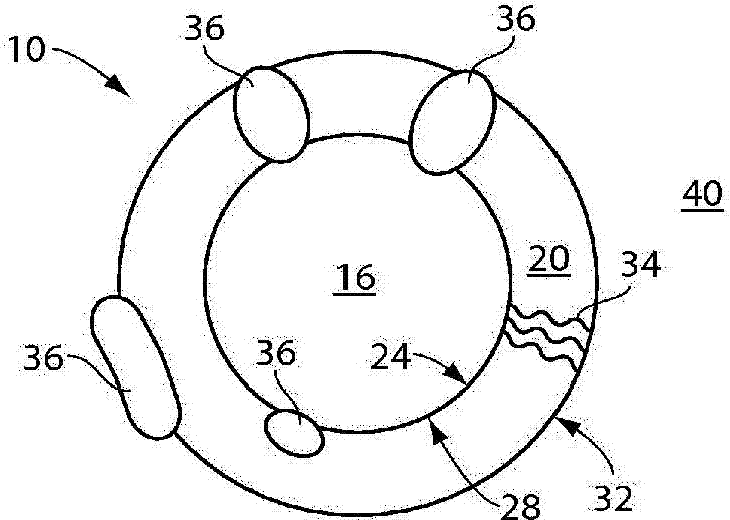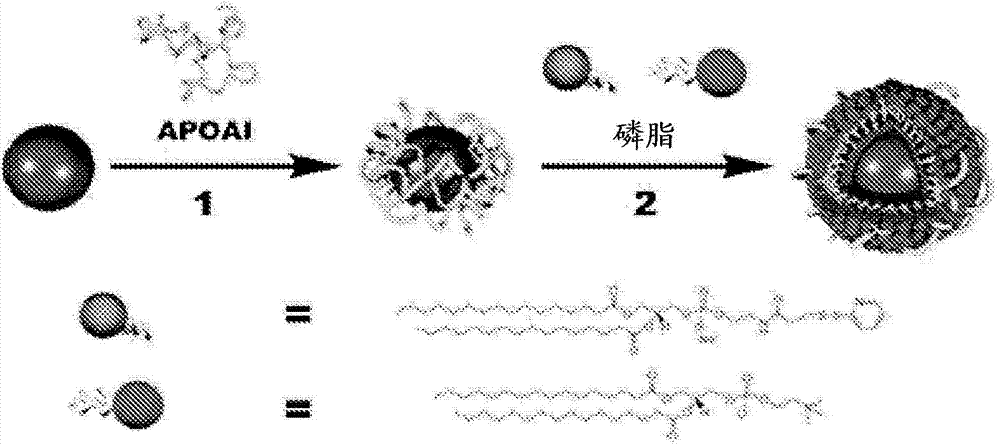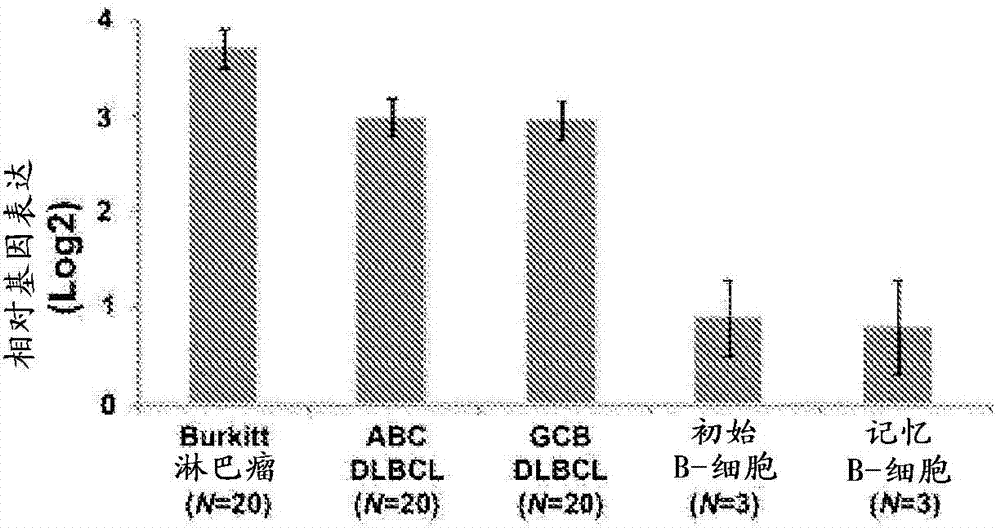Nanostructures for treating cancers and other conditions
A nanostructure, cancer technology, applied in metabolic diseases, allergic diseases, medical preparations containing active ingredients, etc., can solve the problems of large structure size, wide size distribution, short stability, etc.
- Summary
- Abstract
- Description
- Claims
- Application Information
AI Technical Summary
Problems solved by technology
Method used
Image
Examples
Embodiment Construction
[0197] This example demonstrates the use of synthetic nanostructures such as HDL-NPs to treat cancers such as SR-B1 expressing cancers.
[0198] Functional biomimetic high-density lipoprotein nanoparticles (HDL-NPs) are described as a potential therapy for B-cell lymphoma. The HDL-NPs appear to act through their ability to target type B-1 scavenger receptors (SR-B1) and their functional ability to mask cholesterol. Thus, the HDL-NPs are surface chemical mimics of spherical HDL; however, the gold nanoparticle template used to control the size and shape of the HDL-NPs occupies some space in the particle normally reserved for esterified cholesterol. Thus, like native HDL, HDL-NP takes up SR-B1 but provides very little cholesterol to the cell. At the same time, HDL-NP masks free cellular cholesterol on its surface. The data here demonstrate that HDL-NP targets SR-B1 expressed by B-cell lymphoma cell lines, maximizes cholesterol efflux when compared to native HDL, and induces apo...
PUM
| Property | Measurement | Unit |
|---|---|---|
| size | aaaaa | aaaaa |
| thickness | aaaaa | aaaaa |
Abstract
Description
Claims
Application Information
 Login to View More
Login to View More - R&D
- Intellectual Property
- Life Sciences
- Materials
- Tech Scout
- Unparalleled Data Quality
- Higher Quality Content
- 60% Fewer Hallucinations
Browse by: Latest US Patents, China's latest patents, Technical Efficacy Thesaurus, Application Domain, Technology Topic, Popular Technical Reports.
© 2025 PatSnap. All rights reserved.Legal|Privacy policy|Modern Slavery Act Transparency Statement|Sitemap|About US| Contact US: help@patsnap.com



